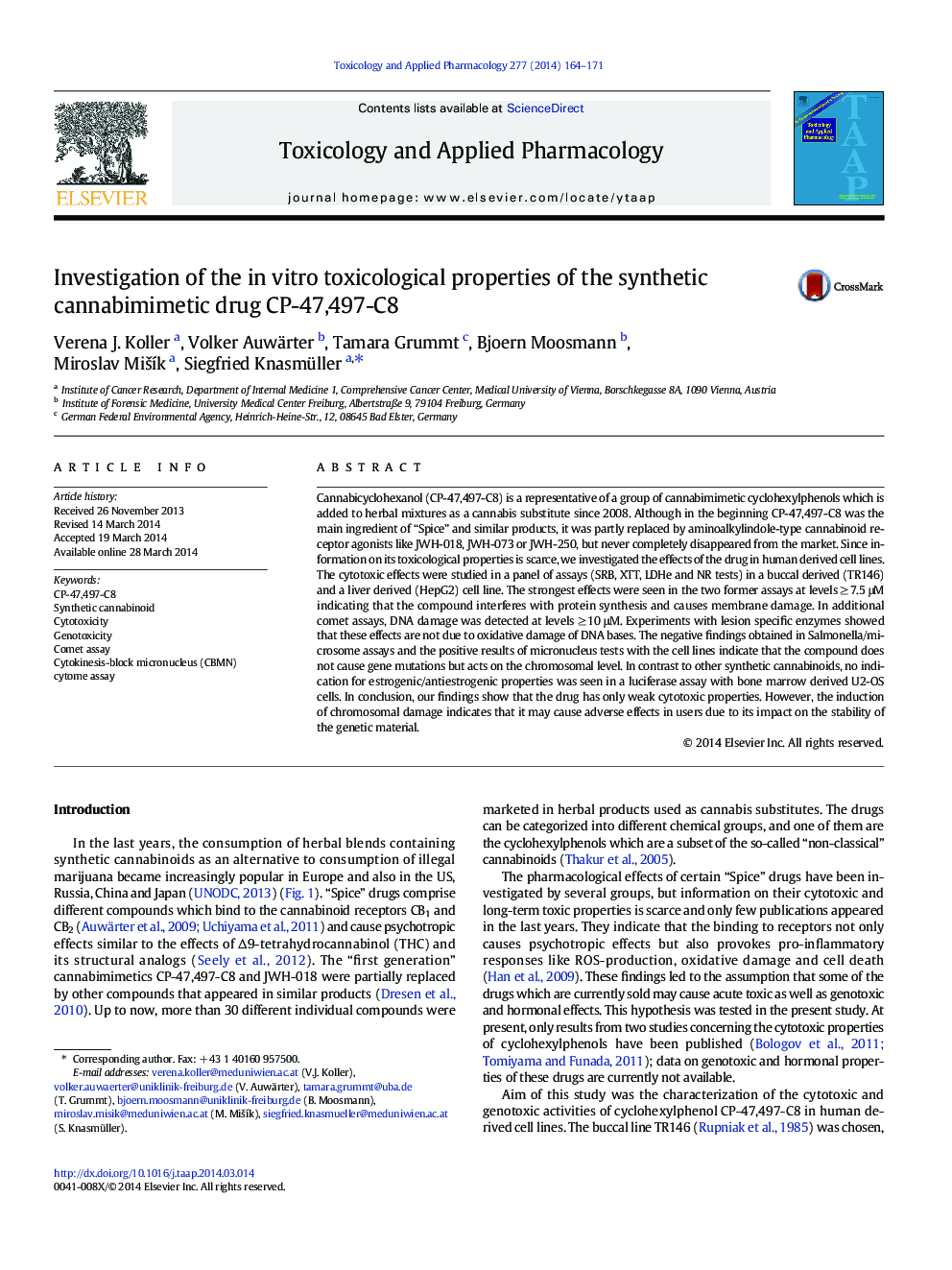| کد مقاله | کد نشریه | سال انتشار | مقاله انگلیسی | نسخه تمام متن |
|---|---|---|---|---|
| 2568535 | 1128464 | 2014 | 8 صفحه PDF | دانلود رایگان |

• We tested the toxic properties of a synthetic cannabinoid.
• Acute cytotoxic effects were detected with doses ≥ 7 μM.
• No hormonal effects were found.
• DNA damage was detected at levels ≥ 10 μM in comet assay and micronucleus tests.
• Effects in directly exposed tissues may occur in humans.
Cannabicyclohexanol (CP-47,497-C8) is a representative of a group of cannabimimetic cyclohexylphenols which is added to herbal mixtures as a cannabis substitute since 2008. Although in the beginning CP-47,497-C8 was the main ingredient of “Spice” and similar products, it was partly replaced by aminoalkylindole-type cannabinoid receptor agonists like JWH-018, JWH-073 or JWH-250, but never completely disappeared from the market. Since information on its toxicological properties is scarce, we investigated the effects of the drug in human derived cell lines. The cytotoxic effects were studied in a panel of assays (SRB, XTT, LDHe and NR tests) in a buccal derived (TR146) and a liver derived (HepG2) cell line. The strongest effects were seen in the two former assays at levels ≥ 7.5 μM indicating that the compound interferes with protein synthesis and causes membrane damage. In additional comet assays, DNA damage was detected at levels ≥ 10 μM. Experiments with lesion specific enzymes showed that these effects are not due to oxidative damage of DNA bases. The negative findings obtained in Salmonella/microsome assays and the positive results of micronucleus tests with the cell lines indicate that the compound does not cause gene mutations but acts on the chromosomal level. In contrast to other synthetic cannabinoids, no indication for estrogenic/antiestrogenic properties was seen in a luciferase assay with bone marrow derived U2-OS cells. In conclusion, our findings show that the drug has only weak cytotoxic properties. However, the induction of chromosomal damage indicates that it may cause adverse effects in users due to its impact on the stability of the genetic material.
Journal: Toxicology and Applied Pharmacology - Volume 277, Issue 2, 1 June 2014, Pages 164–171